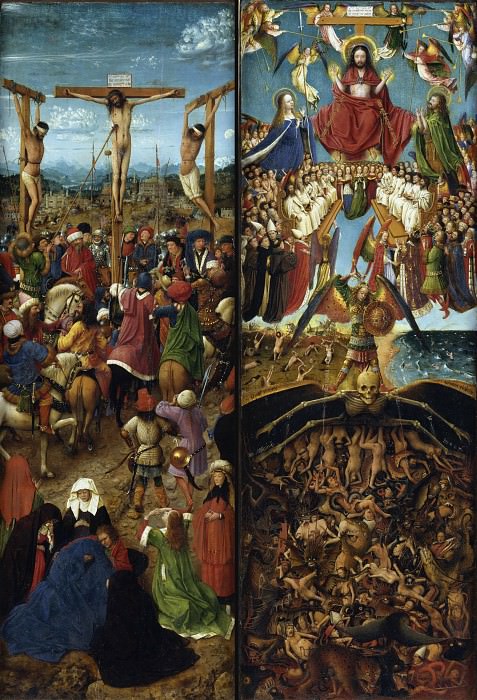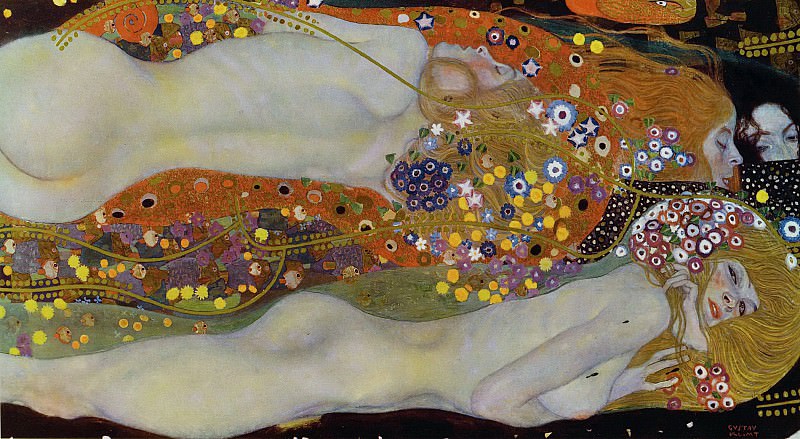The Life and Art of Gustav Klimt
Early Life and Education
Gustav Klimt was born on July 14, 1862, in Baumgarten, a suburb of Vienna, Austria. He was the second of seven children in his family. His father, Ernst Klimt, was a gold engraver, which may have influenced Klimt's later use of gold leaf in his paintings. Klimt's mother, Anna Klimt, had an interest in music, which also had a significant impact on Gustav. He showed an early aptitude for art, and at the age of 14, he enrolled in the Vienna School of Arts and Crafts (Kunstgewerbeschule), where he received rigorous training in the traditional academic style.
Founding the Vienna Secession
In the early stages of his career, Klimt worked as a decorator, creating murals and ceilings in public buildings. However, his style began to evolve, and he grew increasingly dissatisfied with the conservative art establishment. In 1897, Klimt, along with a group of like-minded artists, founded the Vienna Secession. This movement aimed to break away from the academic norms and promote a new, modern approach to art. The Secessionists sought to integrate various art forms, including painting, sculpture, and architecture, and were heavily influenced by Symbolism and Art Nouveau.
The Golden Phase
Klimt's "Golden Phase," spanning from the late 1890s to the early 1910s, is considered the pinnacle of his artistic achievement. During this period, he developed a unique style characterized by the use of gold leaf, intricate patterns, and symbolic imagery. One of the most iconic works from this phase is "The Kiss" (1907-1908), which depicts a couple in an intimate embrace, their bodies adorned with elaborate gold and geometric designs. This painting exemplifies Klimt's fusion of realism and abstraction, as well as his exploration of themes related to love, sexuality, and the human experience.
Symbolism and Themes
Klimt's work is often imbued with symbolism, reflecting his fascination with mythology, allegory, and the human psyche. His paintings frequently feature sensuous female figures, which he used to explore themes of fertility, beauty, and eroticism. Klimt's "Danaë" (1907) is a prime example, depicting the mythological figure Danaë receiving a golden shower from Zeus. The painting's sensuality and symbolism exemplify Klimt's ability to convey complex emotions and ideas through his art.
Portraits and Patronage
In addition to his allegorical works, Klimt was a highly sought-after portraitist. He painted numerous portraits of Vienna's social elite, including "Portrait of Adele Bloch-Bauer I" (1907), also known as "The Woman in Gold." This portrait is notable for its luxurious use of gold and its intricate detailing, which highlights Klimt's mastery of the decorative arts. Klimt's portraits often capture the individuality and personality of his subjects, while also imbuing them with a sense of timeless elegance and grace.
The Beethoven Frieze
One of Klimt's most ambitious projects was the "Beethoven Frieze" (1902), created for the 14th Vienna Secession exhibition. The frieze was intended as a visual accompaniment to a performance of Beethoven's Ninth Symphony. Spanning over 34 meters in length, the frieze is a monumental work that explores themes of human suffering, redemption, and the transcendence of art. The central panel, "The Choir of Angels," features a procession of figures led by a knight, symbolizing the triumph of the human spirit.
Later Years and Legacy
In his later years, Klimt continued to push the boundaries of his art, experimenting with new techniques and styles. His work became more abstract, with a greater emphasis on color and form. Despite facing criticism from some quarters, Klimt remained a central figure in the Vienna art scene until his death in 1918. His influence can be seen in the works of subsequent artists, including Egon Schiele and Oskar Kokoschka, who were inspired by his innovative approach to art.
The Impact of Klimt's Art
Gustav Klimt's art has had a lasting impact on the world of modern art. His innovative use of materials, such as gold leaf, and his distinctive style have made him one of the most recognizable and celebrated artists of the 20th century. Klimt's ability to blend realism with abstraction, and his exploration of themes related to the human condition, have ensured that his work continues to resonate with audiences today.
Rediscovery and Reappraisal
In the decades following his death, Klimt's work was sometimes overshadowed by the rise of other modernist movements. However, the latter half of the 20th century saw a resurgence of interest in his art. Major exhibitions in museums around the world have celebrated Klimt's contributions to modern art, and his paintings have become highly sought after by collectors. The record-breaking sale of "Portrait of Adele Bloch-Bauer I" in 2006, for example, underscored the enduring value and appeal of Klimt's work.
Klimt's Artistic Techniques
Klimt's artistic techniques were innovative and highly distinctive. He often used a method known as "pointillism," where he applied small, dot-like strokes of paint to create a shimmering, mosaic-like effect. This technique, combined with his use of gold and silver leaf, gave his paintings a luminous quality. Klimt also drew inspiration from Byzantine mosaics, Japanese woodblock prints, and the natural world, incorporating these influences into his work to create a unique visual language.
The Secession Building
The Vienna Secession Building, designed by architect Joseph Maria Olbrich, serves as a lasting testament to the Secessionist movement and Klimt's role within it. The building's iconic golden dome and ornamental façade reflect the movement's emphasis on combining art and architecture. Inside, the main hall houses Klimt's "Beethoven Frieze," allowing visitors to experience the artist's work in its intended context. The Secession Building remains a cultural landmark and a symbol of Vienna's rich artistic heritage.
Klimt's Influence on Contemporary Art
Gustav Klimt's influence extends beyond his immediate contemporaries. His innovative approach to art has inspired generations of artists across various disciplines. In the world of fashion, designers have drawn inspiration from Klimt's use of pattern and color, creating garments that echo his distinctive style. Similarly, contemporary visual artists have incorporated Klimt's techniques and themes into their own work, demonstrating the enduring relevance of his artistic vision.
Conclusion
Gustav Klimt's art continues to captivate and inspire audiences around the world. His unique blend of realism and abstraction, his innovative use of materials, and his exploration of complex themes have secured his place as one of the most important artists of the modern era. Through his paintings, murals, and portraits, Klimt left an indelible mark on the world of art, and his legacy continues to thrive in the 21st century. As we continue to study and appreciate his work, we gain a deeper understanding of the profound impact that Gustav Klimt had on the art world and beyond.














